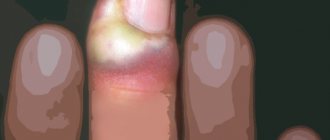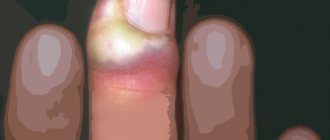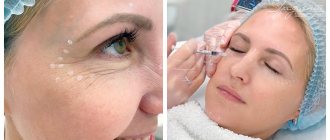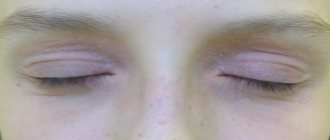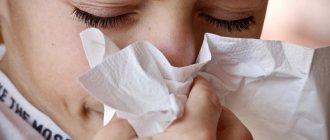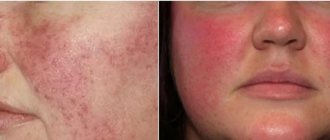Paronychia of the finger (according to ICD 10 code L03.0) occurs in adults and children. This is an inflammation of the lateral and proximal nail folds or skin folds that surround the nail. The main reason for the start of the inflammatory process is the destruction of the protective barrier, which prevents foreign particles and pathogenic microorganisms from penetrating deep into the skin. According to statistics, paronychia occurs 5 times more often in girls and women than in men. Out of the desire to be beautiful, women subject their nails to various, not always safe, procedures. The greatest risk of infection is in middle-aged women. The disease paronychia is otherwise called periungual panaritium. There are acute and chronic forms of inflammation. Their causes and treatments differ.
Kinds
According to the nature of the course, paronychia can be:
- Spicy. It occurs quite often and is bacterial in nature. Lasts less than 6 weeks. Accompanied by severe pain, formation of pus;
- Chronic. If the inflammation continues for more than 6 weeks, then it is chronic paronychia. It is caused by mechanical, chemical factors, contact dermatitis, onychomycosis, eczema, psoriasis.
Depending on the nature and severity of the inflammatory process, the following types of paronychia are distinguished:
- Simple. Characterized by slight swelling, redness, moderate pain in the nail fold area;
- Purulent. Its symptoms include severe throbbing pain, a feeling of squeezing, and severe swelling in the area of the affected nail fold. In places where pus accumulates, the skin acquires a yellow tint, and pain is felt when pressed;
- Ulcerative. Painful ulcerations form on the surface of the nail folds, from which pus is periodically released;
- Fungal (candidal paronychia). Caused by fungi of the genus Candida. Symptoms are mild. There is slight redness of the skin, disappearance or reduction of the cuticle, and nail changes specific to onychomycosis;
- Paronychia with eczema or psoriasis. It is characterized by moderate inflammation, peeling, and the appearance of blisters on the skin, which form crusts as they dry.
Due to the occurrence of the inflammatory process, paronychia occurs:
- Bacterial. Acute forms in most cases are caused by Staphylococcus aureus, chronic forms - by streptococci and pseudomonads. In children, acute forms resulting from the habit of biting nails or sucking fingers are associated with infection of the nail tissues by aerobic and anaerobic bacteria of the oral cavity;
- Viral. It is caused by the herpes simplex virus;
- Fungal. Develops against the background of infection of the tissues of the nail folds by yeast-like fungi of the genus Candida;
- Non-infectious. It is caused by contact irritants, excessive humidity, side effects of certain medications, and chronic skin diseases.
The most common are bacterial and fungal paronychia.
Classification of panaritiums
Taking into account the location and nature of the affected tissues, the following types of panaritium are distinguished:
- Cutaneous panaritium is the mildest form: an abscess forms in the thickness of the skin.
- Periungual panaritium (paronychia) - inflammation is localized in the area of the periungual fold.
- Subungual felon - develops under the nail plate.
- Subcutaneous felon - occurs in the subcutaneous tissue of the palmar surface of the fingers.
- Bone panaritium - a distinctive feature is the involvement of bone in the purulent process.
- Articular felon - develops in the interphalangeal or metacarpophalangeal joints.
- Osteoarticular felon - usually occurs with the progression of articular felon, when inflammation spreads to the articular ends of the phalangeal bones.
- Tendon felon - localized in the tendon area.
What causes inflammation around the nail?
To understand where exactly inflammation occurs during paronychia, let’s look at how the nail and the soft tissue around it are structured. The nail apparatus has a complex structure. It consists of five main structures: the nail plate, matrix, nail bed, cuticle and nail folds.
The cuticle is an important protective element; it connects the skin of the finger and the nail plate together. Mechanically protects against irritants, allergens, and pathogenic microorganisms getting under the nail from the side ridges and the growth zone. Another feature of this skin over the nail is that it has no blood vessels or nerve endings. That's why we don't feel pain or see blood when a manicurist trims the cuticle. But, on the other hand, the lack of blood supply means the lack of local protection from external foreign bodies, irritants, and pathogenic agents. This function is performed by leukocytes - white blood cells. Therefore, in case of injury to the cuticle, negative factors do not encounter obstacles and immediately pass deeper.
The main factor that causes acute paronychia is infection. Even with minor trauma to the cuticle or destruction of the integrity of the skin on the nail folds, pathogenic microorganisms penetrate deep into the tissues of the nail apparatus. In 60% of cases, inflammation develops due to strains of Staphylococcus aureus (Staphylococcus aureus). Infection with mixed pathogenic microflora and streptococcus is possible.
More often paronychia occurs on the hands. The fingers, unlike the toes, come into more contact with the environment, are exposed to mechanical injuries, contact with water, aggressive substances, and potential sources of infection. Cracks that are invisible to the eye, the presence of which you may not even suspect, become gateways for the penetration of pathogenic bacteria and fungi and provoke inflammation.
The most common causes of paronychia include:
- poor disinfection of hands or instruments during manicure or pedicure;
- splinters, abrasions, cuts, scratches in the area around the nail;
- torn or bitten off burrs;
- habit of biting nails;
- tight, uncomfortable shoes (causes paronychia on the toes)
- ingrown nails;
- wearing artificial nails;
- fungal infection of the skin or nails (onychomycosis);
- careless or improper trimming of nails at home.
The habit of sucking fingers can cause inflammation of the nail folds in young children.
Chronic paronychia is an inflammatory reaction that occurs in response to irritants or allergens. If in the acute form, as a rule, only one nail is affected, then in the chronic form, several are affected at the same time. Usually these are the thumb, index and middle fingers of the working hand.
Chronic paronychia develops as a consequence of irritant contact dermatitis or fungal infection.
It often occurs among housewives and people of certain professions who come into contact with irritating substances and high humidity. Such professions include cleaners and laundry workers who are constantly in contact with water, powders, weak alkalis, acids, detergents and household cleaning products.
Also at risk are professions related to the kitchen, cooks, bartenders, and dishwashers. Fungal paronychia, caused by a fungus of the genus Candida, is commonly called bakers' or confectioners' disease. Constant contact with moisture, dough, and sugars creates favorable conditions for the development of such a fungal infection.
A chronic form of inflammation of the skin around the nail is often found among employees of chemical laboratories and people working with fuels and lubricants. At risk are professional swimmers whose hands and feet are constantly in contact with water and pool disinfectants.
With constant exposure to aggressive substances, the protective barrier of the nail is gradually destroyed, which leads to inflammation.
Chronic paronychia often occurs in people with diabetes and chronic skin diseases such as eczema and psoriasis. It can also be caused by long-term use of certain medications. For example, drugs from the group of retinoids and protease inhibitors.
Predisposing factors and reasons for the development of panaritium
The direct cause of panaritium is most often Staphylococcus aureus , which penetrates the tissue through wounds, abrasions, injections, cracks, splinters or hangnails, which most often go unnoticed, because look so insignificant that the patient simply does not pay attention to them. Less commonly, panaritium is caused by gram-negative and gram-positive bacilli , streptococcus , Escherichia coli , Proteus , as well as anaerobic non-clostridial microflora and pathogens of putrefactive infections .
External factors contributing to the development of felon include:
- systematic cooling,
- hydration,
- vibration,
- maceration,
- contamination or exposure to irritants.
Internal factors that increase the likelihood of felon occurring are:
- endocrine diseases,
- hypovitaminosis,
- metabolic disorders,
- decreased immunity.
How does it manifest?
Symptoms of paronychia depend on the form of the disease. When the protective barrier between the nail and the nail fold is broken, pathogenic microorganisms or aggressive substances enter there, which triggers the growth of pathogenic microflora and the inflammatory process.
In acute paronychia, inflammation develops quickly. The first signs appear 1 to 2 days after the injury. These include redness of the damaged area, swelling, pain when pressed, and a local increase in temperature. Subsequently, purulent masses accumulate under the skin, which appear yellow or yellow-green. At the same time, swelling increases, the nail fold rises, and the finger becomes painful not only when pressed, but also at rest. Bending the upper phalanx of the finger causes difficulty; there is a feeling of fullness inside. With strong pressure, pus may be released from the nail sinus, the gap between the nail bed and the nail fold.
Paronychia in a small child initially causes moodiness and problems sleeping. Then the baby’s finger turns red and swells. The inflamed area becomes hot to the touch, touching it is very painful. The child cries, pulls away his sore finger when the parents try to look at him, and cannot bend it.
The chronic form of inflammation develops slowly and does not cause severe pain. The nail fold may be red and swollen. There is no throbbing pain. Accumulation of pus is possible only during exacerbations. The skin on the nail fold may peel and flake. Long-term chronic inflammatory processes lead to dystrophic changes in the nail and the disappearance of the cuticle. The shape and structure of the nail plate changes, its thickening and discoloration are observed.
Fungal and bacterial forms of infection differ in intensity and localization of the inflammatory process. With fungal paronychia caused by infection with a fungus of the genus Candida, redness and swelling are observed. There is pain when pressing on the roller. With prolonged flow, transverse grooves form on the nail, and the periungual skin peels off. The inflammatory focus is located between the nail skin itself and the outer surface of the nail plate. A bacterial infection is characterized by severe throbbing pain; the inflammatory focus is located in the soft tissues of the nail fold and does not affect the nail plate.
Treating an abscess with surgery and medication
Many parents are thrown into a state of panic by pus on the child’s toe near the nail. What to do in such a situation? At the first signs of inflammation under the nail plate, you should consult a specialist. Based on a visual examination and some tests, the doctor will be able to prescribe treatment.
Treating an abscess with medications involves taking strong antibiotics. If felon has a chronic form, then you can regularly use antifungal ointments. In advanced cases, doctors prescribe pills.
If the pus on the toe near the nail has developed into an acute abscess and the infection has spread beyond the affected area, surgery may be required. The doctor will hide the boils and clean out the pus that has accumulated in them. After this, the affected area is disinfected. An antiseptic bandage is applied to the sore spot.
Laser therapy is gaining popularity every year. This is a modern and highly effective method that helps minimize pain during surgery. In addition, after such an intervention there are no noticeable scars or cicatrices. Laser can be used to treat suppuration on the nail without deforming the plate.
Another innovative method of surgical intervention is cryotherapy. It is based on the use of cold. The abscess is removed using liquid nitrogen. Low temperatures reduce the sensitivity of nerve endings, so the procedure is almost painless.
Diagnostics
If you suspect acute paronychia, contact a podiatrist or surgeon if there is no podiatrist nearby. The diagnosis is made based on clinical symptoms, interviewing the person, and examining the affected area. It is important to talk about the specifics of your work and previous injuries in the nail area. The doctor will check whether there is an accumulation of purulent masses (abscess), assess the severity of the condition and decide on the method of treatment.
When diagnosing paronychia, it is important not to confuse the disease with other possible disorders in the nail plate area with similar symptoms.
These include:
- Superficial infection, which manifests as erythema and swelling in the affected part without throbbing pain;
- Panaritium or purulent inflammation of the deep layers of the skin of the finger. Characterized by a severe course. Paronychia is considered the initial stage of felon. With felon, redness, pain and the formation of a bubble with purulent contents do not necessarily occur near the nail. The affected area becomes warm, red, tense and very painful;
- Herpetic infection of the distal (upper) phalanx of the fingers. In this case, before the onset of the inflammatory process, the person will experience burning and itching. Herpetic infection of the fingers is characterized by the formation of vesicles, pain, and redness;
- Onychomycosis. This is a fungal infection of the nail that causes a cloudy, yellowish coloration of the nail plate.
- Squamous cell carcinoma. It mainly affects the skin, but sometimes also affects the nail bed. This is a rare malignant subungual tumor that may be mistaken for chronic paronychia;
In addition, it is important to carry out a differential diagnosis with eczema, posriasis and Reiter's syndrome (joint damage that can cause accumulation of pus in the area of the nail fold).
Instrumental diagnostic methods, such as radiography, ultrasound, and laboratory tests are prescribed only if the observed clinical picture of paronychia is atypical and raises doubts about the diagnosis.
Clinical signs
The favorite localization of purulent inflammation on the feet is the periungual space of the first toe.
In most cases, only the big toe is suppurated; if two or more nail plates are affected, a decrease in immunity or the presence of mycosis (fungus) of the feet is likely.
Regardless of the pathogen, a purulent abscess on the finger causes the following symptoms:
- hyperemia in the inflamed area;
- formation of purulent exudate;
- increasing swelling, deforming the affected finger;
- burning and soreness at the initial stage of the disease, followed by throbbing pain;
- impaired motor function of the finger: stiffness, limited mobility;
- local hyperthermia.
In this case, the general condition worsens, weakness and fatigue appear, and a slight increase in body temperature. Panaritium often causes sleepless nights due to severe pain.
If an internal purulent process develops, the pain becomes unbearable. If the problem is ignored and there is no timely treatment, suppuration of the finger can be complicated by severe pathologies, which may require amputation of the foot to get rid of.
How to treat?
It is better to entrust the treatment of paronychia on the hands or feet to a doctor, especially if it is a purulent inflammation. Contact a podiatrist, surgeon or dermatologist with this problem. He will examine the affected area, assess the severity of the infection, clean the pus, and select medications for further home use. If necessary, he will refer you for additional examinations and analysis of purulent contents to identify a specific pathogen.
Attempts to treat paronychia at home, and especially squeezing out pus, are dangerous due to the spread of infection to neighboring tissues and the addition of new pathogenic pathogens.
The indication for surgical intervention is inflammation of any form if it is accompanied by an accumulation of pus.
Therefore, consult a doctor if the following symptoms appear:
- redness, swelling and tenderness of the skin at the base of the nail plate or in the area of the lateral nail folds;
- suppuration, causing detachment of the skin and nail plate, discharge of pus;
- a sharp increase in pain when pressing on the nail and fingertip.
Treatment of acute form
Treatment of acute paronychia is based on the severity of inflammation and the presence of an abscess. If there is an abscess, it should be opened to remove the pus. Without this procedure, the condition will only get worse.
Inflammation with accumulation of pus in the nail fold is treated with minor surgery. Removal of paronychia and cleansing of pus is performed through small incisions using local anesthesia or needle puncture without anesthesia. This procedure is necessary to remove pus that has accumulated under the skin. In severe cases, where the abscess extends to the nail bed or is associated with an ingrown nail, it may be necessary to remove part of the nail plate.
Local medications for the treatment of paronychia include ointments aimed at combating bacterial infection. Broad-spectrum anti-inflammatory and antibacterial agents are used, which must be effective against Staphylococcus aureus. After removing the pus, the doctor applies a sterile gauze bandage with medicinal ointment to the resulting wound. As soon as the pus begins to come out, the person immediately feels relief. Throbbing pain and tension goes away.
For severe forms of inflammation, antibiotics may be prescribed orally. This is necessary in cases of severe infections, immunodeficiency conditions, or if adequate drainage cannot be provided for the outflow of pus.
After drainage, it is important to follow all recommendations of the doctor who performed the procedure to prevent secondary infection. After a few days, the patient should again see a specialist to assess the condition of the periungual tissues. With proper care after draining the abscess, the affected finger heals quickly without any complications.
If the opening of the paronychia occurs on its own, treat the wound with an antiseptic. Use a solution of chlorhexidine, hydrogen peroxide, furatsilin for this. Wrap with a sterile bandage and consult a doctor for further care advice.
Is it possible to cure paronychia on your own at home?
It is possible, but only in the initial stages, when there is no formation of pus yet. For inflammation without an obvious abscess, warm baths with antiseptic solutions (chlorhexidine, povidone-iodine), and salt baths help. They need to be done 4–5 times a day for 10–15 minutes. If your condition does not improve within two days, see a doctor. It is not recommended to use anti-inflammatory and antibacterial ointments on your own. Such drugs must be prescribed by a doctor.
If you consult a specialist in a timely manner, treatment of acute inflammation has a favorable prognosis. The condition improves within a few days. If acute paronychia is constantly repeated, then it develops into chronic. Therefore, patients should take steps to avoid future nail fold injuries.
Treatment of paronychia with concomitant skin diseases
If the cause of acute paronychia is associated with psoriasis or eczema, then treatment in these cases should be aimed at the underlying cause. Contact your dermatologist and tell him about your nail problem.
Eczema and psoriasis are not contagious chronic skin diseases; their course consists of alternating periods of exacerbations and remission. Unfortunately, it is not yet possible to completely get rid of them. The main goal of treating these diseases is to relieve symptoms and achieve stable remission.
Oral medications, local ointments and creams, and physical therapy help. Giving up bad habits, strictly following a diet and avoiding nervous stress is of great importance. Since often these factors become the trigger for the onset of exacerbation. Foods that cause allergies, alcohol, sweets, as well as fatty, spicy, and smoked foods that are difficult to digest should be excluded.
During exacerbations, the skin turns red, becomes inflamed, begins to peel, and itch. Ulcers and rashes may appear on it. It is important to prevent complications in the form of a secondary bacterial or fungal infection, as this leads to paronychia and slower skin recovery.
Treatment of the chronic form
Treatment of chronic paronychia is aimed at identifying and eliminating the source of irritation. You need to prepare for the fact that it will be long, it will take from several weeks to several months, depending on the severity of the condition. The fact is that chronic paronychia responds slowly to treatment.
In case of a chronic inflammatory process, if possible, they try to avoid contact with the irritant, and prescribe local anti-inflammatory agents that restore the protective functions of the skin.
If paronychia occurs as a result of taking certain medications, then the doctor and patient must decide together whether the adverse effects of such treatment are acceptable for the therapeutic effect of the drug. Or you should think about choosing another drug. Stopping taking the medication that provokes inflammation will allow you to quickly restore the periungual tissues, remove irritation and discomfort.
If the cause is a fungal infection, local antifungal agents are prescribed in the form of ointments, gels, and solutions. If necessary, clean the area damaged by the fungus with a hardware medical manicure or pedicure.
The success of treatment of chronic paronychia largely depends on following the doctor’s instructions and prevention, which the patient will carry out independently.
Medical care and treatment for finger ulcers near the nails on the toes and fingers
Drug treatment involves relieving symptoms and blocking the action of pathogenic microorganisms. In this regard, a course of antibiotic treatment may be required. In particularly difficult situations, when the problem is advanced and a large abscess has formed, surgical intervention may be required. In any case, the doctor will try to open the abscess to free the tissue from swelling. In the most difficult cases, when the localization of edema is very extensive, the nail plate is removed. Then, as the wound heals, a new healthy plate will grow.
Photo from the site: linezolid.ru
In any case, remember that a large abscess is already a reason to consult a doctor, and not to self-medicate. But even with minor inflammation, it is better to seek help from a clinic. So, if acute pain does not go away within 24 hours, even with a small abscess, you should also seek help from professionals.
Take care of your health and the condition of your nails, avoid acute problems and remember that the main remedy in solving any problem is prevention.
Possible complications
With timely treatment of paronychia, fingers or toes are quickly cured. If you delay it and wait for everything to go away on its own, then the infection will even reach the muscles, tendons, bones of the finger, and enter the systemic bloodstream. Accumulations of pus can undermine the nail and lead to its detachment from the nail bed. In advanced stages, partial or complete removal of the nail plate with long-term rehabilitation is often required.
The main complication of chronic paronychia is nail dystrophy, caused by inflammation in the nail matrix. It manifests itself in the form of fragility, delamination of the nail plate, distortion of the shape, and the formation of grooves and grooves. The color of the nail plate may change.
Prevention
How to make sure that an abscess on your finger near your toenail never appears? There are a number of preventive measures. Explain to children that they should not tear off damaged nails: this contributes to the spread of infection. Use a cuticle softener. Most often, germs penetrate precisely into the area that is located near the nail. Only disinfected tools should be used for pruning. Ideally, each family member should have their own manicure set. When carrying out hygiene procedures, use antibacterial compounds, as well as softening agents for pedicure. When visiting the sauna or swimming pool, be sure to take your own slippers and towels. This will help avoid contracting a fungal infection.
How to prevent paronychia?
To prevent inflammation around the nail, carefully observe personal hygiene rules. Proper nail care will significantly reduce the risk of infection and keep your nails, nail folds and nail beds healthy. If accidental injury or irritation occurs, immediately treat the skin around the nail with an antiseptic. Carry an antiseptic spray in your purse. After all, trouble in the form of a splinter, cut, scratch, or abrasion can happen anywhere, and disinfection of the injured area will prevent infection.
To prevent paronychia, follow these recommendations for caring for your nails and skin of your hands and feet:
- keep your hands and feet dry and clean;
- Apply moisturizer after swimming or every time after washing your hands if you have dry skin, this will help prevent cracking;
- avoid prolonged contact with potential irritants (chemicals, household chemicals, varnishes, paints), use protective gloves;
- do not bite your nails or pick the skin around them;
- do not cut the cuticle, especially on the toenails, destruction of the nail or cuticle will lead to the entry of bacteria and fungi;
- do not bite off or tear off hangnails, carefully trim them with nail clippers;
- do not grow your nails too long, trim them regularly and smooth out sharp edges with a nail file;
- keep your hands away from constant exposure to water, avoid contact of irritants or allergens with your skin;
- disinfect manicure instruments before the procedure;
- keep your blood sugar levels normal if you suffer from diabetes;
- Keeping your shoes and socks always dry will help prevent the development of fungal paronychia.
If you cannot avoid paronychia, do not be afraid and seek medical help. We will always be happy to help you at the Eva Korneeva Podology Center. With us you can quickly, safely and painlessly cure inflammation around the nail. All manipulations are performed under 100% sterility conditions without the risk of complications. Quick rehabilitation after the procedure will allow you to return to your business, but without pain and discomfort in your fingers.
To make an appointment, call +7 (985) 489-45-86.
5 5
Folk remedies
What to do if your big toe is festering? You can also get rid of inflammation using folk remedies. It is best to use a whole range of measures. This will be much more effective. Folk remedies for treating abscesses contain readily available ingredients, so you can easily prepare them at home. Particular attention must be paid when treating abscesses in children. The main thing is to prevent further spread of infection.
The danger of manicure
The most popular salon procedure is manicure. This fact is confirmed by the growing number of nail bars located in shopping centers. Women want to quickly get their hands in order by popping in for a manicure during their lunch break or shopping for groceries for the home.
Hygienic cleaning of nails in a salon is not only the most popular, but also the most dangerous procedure. Venereologists and dermatologists regularly treat pathologies that develop as a result of infection after a manicure. The danger of contracting hepatitis and HIV infection here is quite real if the master does not carry out a set of sterilization measures. As numerous checks have shown, many workers of even the most elite salons are guilty of this.
Cases of HIV infection after going to a beauty salon are truly extremely rare. But this is not the merit of the masters. This virus dies quickly in the open air. But hepatitis is very stable and it is quite possible to become infected with it.
Most often, the nail plate is affected by bacterial infections and fungi. Through the cuticle injured during the procedure, pyogenic cocci can enter the wound. The infection begins to develop very quickly. The process is accompanied by symptoms such as swelling and pain. This may lead to the development of complications.
Patients often turn to the therapist with complaints that their finger has become inflamed after a manicure. It is already too late to make lotions and apply ointments. The abscess must be opened surgically. To avoid this painful manipulation, measures should be taken as soon as the first symptoms of infection appear.
